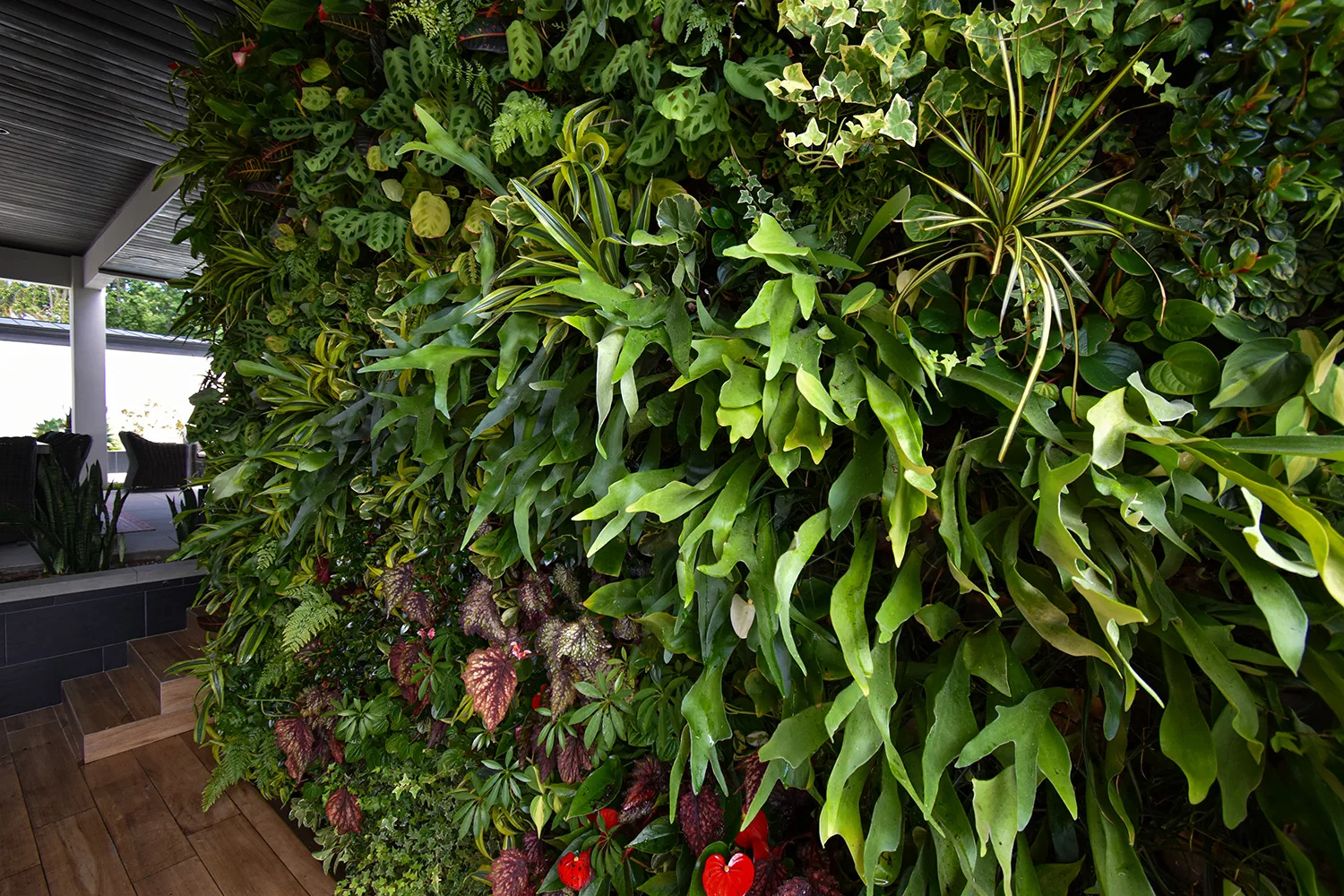In the ever-evolving world of sustainable design, innovative concepts like living walls have taken center stage, seamlessly blending the urban landscape with nature’s beauty. These vertical gardens, often referred to as green walls or indoor living walls, not only captivate the eye but also provide a breath of fresh air to urban environments. In living wall design, the fusion of artistry and environmental science in the creation of these verdant masterpieces is a fascinating journey into the realm of green infrastructure.
Designing a Living Canvas: Colors, Textures, Depths, and Patterns
The creation of a living wall is an artistic endeavor where designers wield colors, textures, depths, and patterns to compose a captivating living canvas.
Colors
The choice of plant species is pivotal in dictating the palette of colors that will adorn the wall. Vibrant reds, calming greens, and soft pastels-each hue contributes to the wall’s visual impact.
Textures
From velvety ferns to spiky succulents, the interplay of textures adds depth to the wall’s appearance, giving it a multidimensional quality that beckons touch. Textures are a tactile delight in the realm of living walls.
Depth
By arranging plants with varying growth habits, designers create an illusion of depth, making the wall appear lush and three-dimensional. Cascading plants spill over the edges, creating a sense of movement and continuity. Depth isn’t just visual; it’s a spatial experience.
Patterns
Whether symmetric or asymmetric, patterns guide the viewer’s gaze and establish a sense of order. The juxtaposition of different leaf shapes and sizes forms intricate patterns that dance against the backdrop of the wall. Patterns emerge through the careful arrangement of plant species.
Environmental Factors: The Silent Choreographers of Living Wall Success
Behind the aesthetic spectacle of a living wall lies the silent choreography of environmental factors that orchestrate the success of specific plant species in particular regions. Understanding and harnessing these factors are vital for maintaining the wall’s vitality.
Light
The intensity and direction of light influence plant growth. For plants that like shade, places with indirect light are appropriate. In contrast, areas with direct sunlight are suitable for sun-loving species.
Humidity
Indoor environments have varying humidity levels. Plants originating from humid climates thrive in such conditions, while drought-tolerant species are more suited to drier atmospheres.
Temperature
Different plant species have distinct temperature preferences. Balmy tropical plants flourish in warmth, whereas cold-hardy varieties withstand cooler temperatures.
Air Quality
Living walls contribute to indoor air purification. However, some plants are more adept at filtering pollutants than others. Selecting plants with this ability enhances the wall’s ecological impact.
Watering and Drainage
Proper irrigation and drainage systems are paramount to a living wall’s health. Overwatering or insufficient drainage can lead to plant stress or rot, respectively.
Soil Composition
The soil mix used in living walls must strike a balance between water retention and drainage. Each plant species has specific soil requirements that influence its growth.
Maintenance
Regular living wall upkeep, including pruning, pest control, and fertilization, ensures the wall’s longevity. Choosing low-maintenance species can simplify this aspect.
A Symphony of Nature and Art in Living Wall Design
Creating an indoor living wall is a harmonious blend of artistic ingenuity and scientific understanding. Designers must balance the aesthetic desires of clients with the ecological needs of plant species, all while considering the environmental conditions of the installation site.
In a world where green spaces are becoming scarcer, living walls breathe life into the concrete jungles we inhabit. These vertical gardens remind us of nature’s intrinsic beauty while contributing to improved air quality, reduced energy consumption, and enhanced well-being.
As living walls continue to grace interiors with their elegance, let us marvel at the intricate symphony of nature and design-a testament to our ability to cultivate a greener, more sustainable future right within our living spaces.




